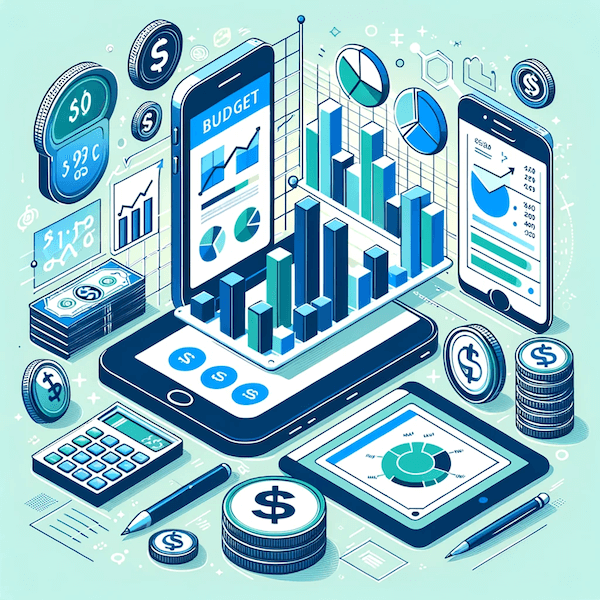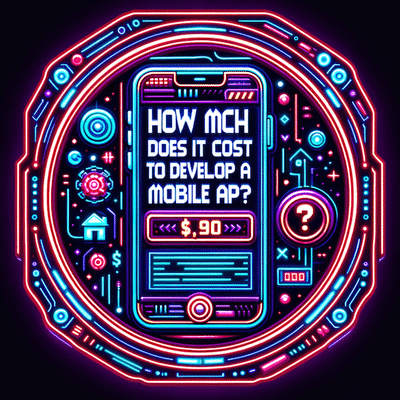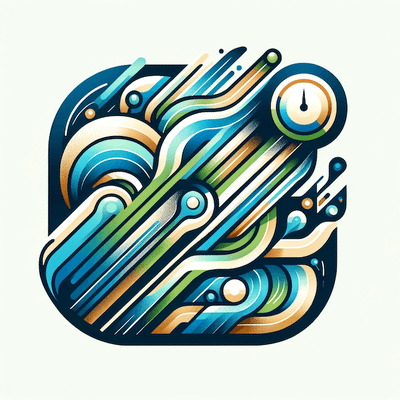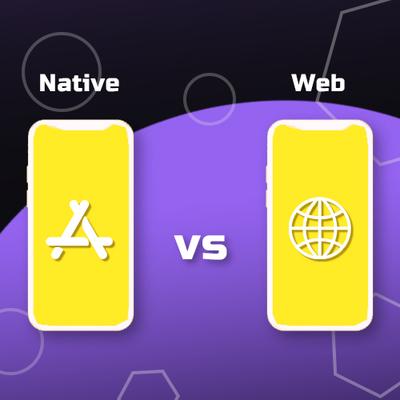
Are you planning to develop a new mobile app but have no idea how much it will cost you?
Don’t worry; we’ve got you covered! In this article, we will explore the intricacies of app design pricing and help you set a realistic budget for your next app project. Pricing your app design can be a daunting task as it involves various factors such as complexity, features, and development time. However, having a ballpark figure in mind can save you from unexpected financial surprises down the road. Whether you’re a startup or an established business, understanding app design pricing is essential to make informed decisions and ensure your investment is worthwhile. Join us as we delve into the fascinating world of app design pricing and unravel the mysteries behind the numbers. So, buckle up and get ready to embark on this journey to discover how much you should budget for your next app project!
The importance of budgeting for app design
When it comes to app design, budgeting is crucial. Your budget determines the quality, features, and functionality of your app. It sets the foundation for a successful project and helps you prioritize your requirements. Without a clear budget in mind, you risk overspending, compromising on quality, or even halting the project midway due to lack of funds. Therefore, it is essential to take the time to determine your app design budget before diving into development.
Budgeting for app design involves evaluating your financial resources and aligning them with your app’s goals and objectives. It allows you to make informed decisions about the scope of your project, the team you can hire, and the features you can include. By setting a realistic budget, you can ensure that your app design project stays on track and meets your expectations.
Factors that influence app design pricing
App design pricing is influenced by several factors that can significantly impact the overall cost of your project. Understanding these factors will help you make better decisions and allocate your budget accordingly.
Here are some key factors that influence app design pricing:
- Complexity: The complexity of your app design plays a significant role in determining the cost. A simple app with basic features will be less expensive compared to a complex app with advanced functionalities.
- Features: The number and complexity of features you want to include in your app affect the pricing. Each feature requires time and effort to develop, which adds to the overall cost.
- Design Requirements: The design elements of your app, such as the user interface (UI) and user experience (UX), can impact the cost. A customized and visually appealing design may require more resources and expertise, increasing the price.
- Platform Compatibility: Developing an app for multiple platforms, such as iOS and Android, can add to the cost. Each platform has its unique requirements and development process, which can increase the complexity and time required.
- Development Time: The time required to develop your app affects the pricing. Complex apps or apps with numerous features may take longer to develop, resulting in higher costs.
- Third-Party Integrations: If your app needs to integrate with external systems or APIs, it can increase the development time and cost. The complexity of the integration and the availability of APIs can impact the pricing.
- Testing and Quality Assurance: Thorough testing and quality assurance are essential for a successful app. The more extensive and rigorous the testing, the higher the cost.
- Post-Launch Support: App maintenance, updates, and customer support are ongoing costs that should be considered in your budget. These expenses ensure that your app remains functional and up-to-date after its launch.
By considering these factors, you can get a better understanding of the pricing structure and estimate the budget for your app design project.
Different pricing models for app design
App design pricing can be structured using various models, each with its own advantages and considerations. The pricing model you choose will depend on factors such as your budget, project requirements, and the level of control and flexibility you desire. Here are some common pricing models for app design:
-
Fixed Price: Under the fixed price model, the app design project is priced based on a predetermined fixed amount. This model is suitable when the project scope and requirements are well-defined. However, it may not account for any changes or additional features requested during the development process.
-
Time and Material: In the time and material model, the pricing is based on the time and resources required to complete the project. This model offers more flexibility as it allows for changes and additions to the project scope. However, it can be difficult to estimate the final cost accurately.
-
Milestone-Based: The milestone-based pricing model involves dividing the app design project into multiple milestones or stages. Each milestone has a fixed price, and payment is made upon completion of each stage. This model allows for better control and accountability but may require more upfront investment.
-
Royalty or Revenue Share: In some cases, app design agencies or freelancers may agree to a royalty or revenue share model. Under this model, the pricing is based on a percentage of the app’s revenue or profit. This model may be suitable for startups or businesses with limited upfront capital but can be risky for designers if the app does not generate significant revenue.
Choosing the right pricing model depends on your project requirements, budget constraints, and the level of flexibility you need. Consulting with app design professionals can help you determine the best pricing model for your specific needs.
Average cost ranges for app design projects
App design costs can vary widely depending on the factors mentioned earlier, such as complexity, features, and development time. While it is challenging to provide an exact figure, we can provide some average cost ranges based on industry standards and experience. It is important to note that these ranges are estimates and can vary based on your specific requirements and the app design agency or freelancer you choose to work with.
-
Simple Apps: Simple apps with basic features and minimal design customization can range from $5,000 to $20,000. These apps typically have a straightforward user interface and require less development time.
-
Moderate Complexity Apps: Apps with moderate complexity, including custom design elements and a range of features, can cost between $20,000 and $100,000. These apps may require integration with third-party APIs and more extensive testing.
-
Complex Apps: High-complexity apps with advanced features, complex design requirements, and integration with multiple systems can range from $100,000 to $500,000 or more. These apps often require a larger development team and a longer development time.
These cost ranges are provided as general guidelines and may not apply to every app design project. It is essential to discuss your specific requirements with app design professionals to get a more accurate estimate based on your unique needs.
How to determine your app design budget
Now that you have an understanding of the factors that influence app design pricing and the different pricing models available, it’s time to determine your app design budget. Here are some steps to help you calculate a realistic budget for your next app project:
-
Define Your App’s Goals and Objectives: Clearly define the purpose of your app and the goals you want to achieve. This will help you prioritize features and allocate your budget accordingly.
-
Research App Design Costs: Conduct thorough research to understand the average costs associated with app design projects similar to yours. Consider industry standards, case studies, and discussions with app design professionals.
-
Create a Detailed Project Scope: Break down your app design project into smaller tasks and define the specific requirements for each. This will help you estimate the time and resources required for each task and determine the overall cost.
-
Consider Additional Costs: Account for any additional costs such as third-party integrations, post-launch support, and ongoing maintenance. These expenses are often overlooked but are crucial for the long-term success of your app.
-
Consult with App Design Professionals: Seek advice from app design agencies or freelancers to get their input on your project scope and budget. Their expertise can help you refine your budget and ensure you haven’t missed any critical considerations.
By following these steps, you can develop a realistic app design budget that aligns with your goals and expectations.
Tips for maximizing your app design budget value
Maximizing the value of your app design budget is essential to ensure you get the most out of your investment. Here are some tips to help you make the most of your app design budget:
-
Prioritize Features: Identify the must-have features for your app and focus on developing those first. This ensures that your core functionality is implemented within your budget, and additional features can be incorporated later if needed.
-
Optimize Design Efficiency: Work closely with your app design team to optimize the design process. By providing clear guidelines, feedback, and prompt communication, you can reduce the time and effort required, ultimately saving costs.
-
Consider Iterative Development: Instead of trying to build a perfect app in one go, consider an iterative development approach. This allows you to release a minimum viable product (MVP) and gather user feedback, which can inform future updates and feature additions.
-
Leverage Open-Source Solutions: Utilize open-source libraries and frameworks to reduce development costs. Open-source solutions often provide a solid foundation for app development and can save time and resources.
-
Invest in Quality Assurance: While it may seem tempting to cut costs on testing and quality assurance, it is essential to invest in thorough testing to ensure your app functions flawlessly. Identifying and fixing issues early can save you from costly rework in the future.
-
Consider Long-Term Scalability: Design your app with scalability in mind. By anticipating future growth and planning for scalability, you can avoid costly redesigns or redevelopments down the line.
By implementing these tips, you can optimize your app design budget and maximize the return on your investment.
The value of investing in quality app design
Investing in quality app design is not just about aesthetics; it directly impacts the success of your app. A well-designed app enhances user experience, increases user engagement, and improves overall customer satisfaction. In contrast, a poorly designed app can lead to frustration, high bounce rates, and negative reviews.
Quality app design goes beyond visual appeal; it encompasses intuitive navigation, seamless user flows, and effective information architecture. It considers user preferences, accessibility, and usability, resulting in a delightful user experience. A well-designed app not only attracts and retains users but also differentiates your brand from the competition.
While investing in quality app design may require a higher budget upfront, the long-term benefits far outweigh the initial costs. A well-designed app has the potential to generate higher user adoption, increased revenue, and positive brand reputation. It saves you from costly redesigns and redevelopments and positions your app for success in a highly competitive market.
Case studies: App design pricing examples
To provide you with a better understanding of app design pricing, let’s explore a few case studies that highlight different app design budgets and their outcomes.
-
Case Study 1: Startup Social Networking App
A startup developed a social networking app targeting a niche audience. The app had basic features such as user profiles, messaging, and content sharing. The app design agency estimated the project would take approximately 4 months to complete, and the total cost was estimated at $30,000. The startup decided to allocate their budget mostly towards development, with a smaller portion for design. While the app’s design was functional, it lacked visual appeal and struggled to attract a significant user base. The startup later invested in a redesign to improve the app’s aesthetics and user experience, resulting in increased user engagement and better overall performance. -
Case Study 2: E-commerce App for Established Retailer
An established retailer wanted to expand its business by developing a mobile e-commerce app. The app design agency estimated a project duration of 6 months and a total cost of $80,000. The retailer allocated a significant portion of their budget towards design, ensuring a visually appealing and user-friendly interface. The app was successfully launched, and within the first year, it generated a substantial increase in sales and customer engagement. The investment in quality app design paid off, allowing the retailer to establish a strong mobile presence and compete effectively in the e-commerce market.
These case studies demonstrate the impact of app design pricing on the overall success of an app. While budget constraints can influence the design quality initially, investing in app design when possible can lead to better outcomes in the long run.
Choosing the right app design agency or freelancer
Selecting the right app design agency or freelancer is crucial to the success of your app project. It’s essential to find a partner who understands your industry, has relevant experience, and aligns with your project goals and budget. Here are some factors to consider when choosing an app design agency or freelancer:
-
Portfolio and Experience: Review the agency’s or freelancer’s portfolio to assess their design capabilities and expertise. Look for relevant experience in your industry or app type.
-
Client Reviews and Testimonials: Read client reviews and testimonials to gauge their satisfaction with the agency’s or freelancer’s work. This can provide valuable insights into their professionalism, communication, and ability to meet deadlines.
-
Communication and Collaboration: Effective communication and collaboration are critical for a successful app design project. Ensure that the agency or freelancer is responsive, open to feedback, and willing to work closely with your team.
-
Pricing and Contracts: Request detailed pricing information and review the terms and conditions of the contract. Ensure that the pricing structure aligns with your budget and there are no hidden costs or surprises.
-
Technical Expertise: Assess the agency’s or freelancer’s technical expertise and understanding of the latest app design trends and technologies. This ensures that they can deliver a modern and functional app design.
-
Support and Maintenance: Inquire about post-launch support and maintenance services. A reliable agency or freelancer should offer ongoing support to address any issues that may arise after the launch of your app.
By considering these factors, you can make an informed decision and choose an app design agency or freelancer that meets your requirements and delivers high-quality results.
Conclusion: Finding the balance between budget and quality in app design
In conclusion, app design pricing plays a critical role in the success of your mobile app project. By understanding the factors that influence pricing, exploring different pricing models, and creating a realistic budget, you can set the stage for a successful app design project. Remember to prioritize features, consider long-term scalability, and invest in quality app design to maximize the value of your budget. Choosing the right app design.


